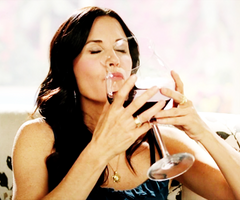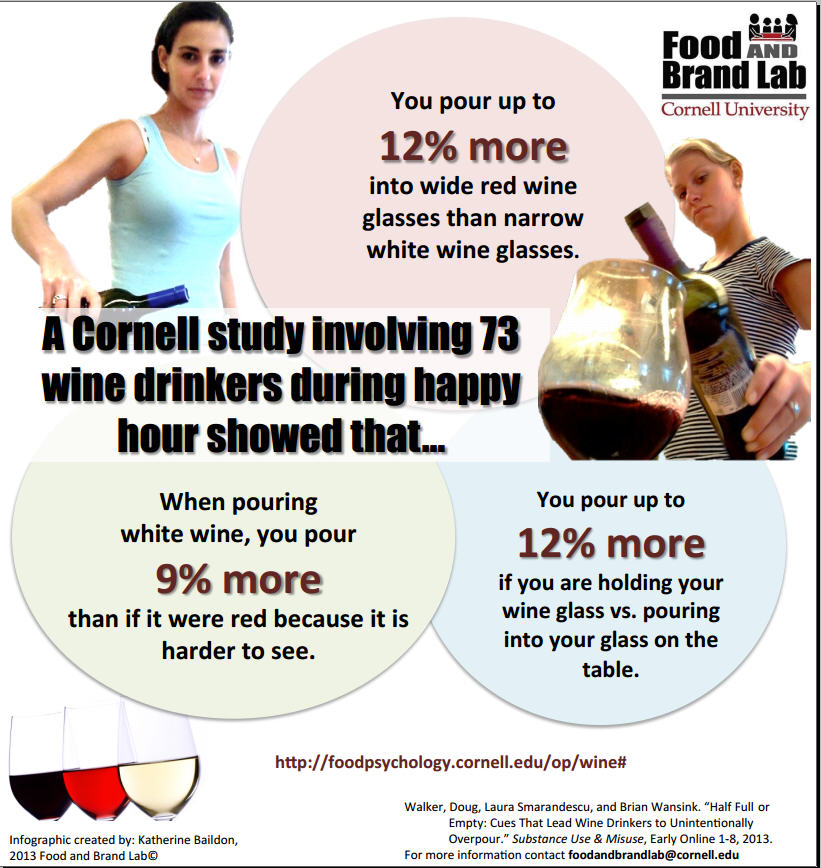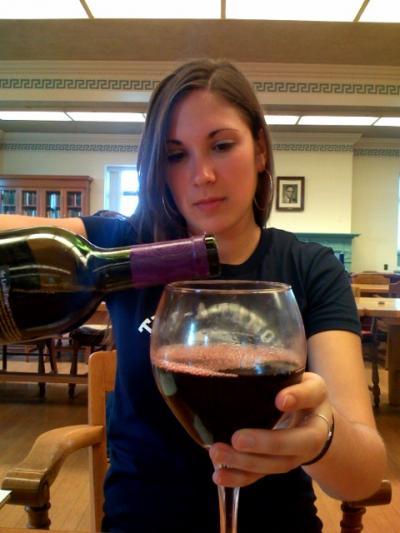Unless you are in a bar and have a bartender with a pour spout (in other words, a terrible bar), pouring a glass of wine is not an exact measurement. And at a private party or in someone's house, a 'glass of wine' can be more like three - if you master the psychology of wine glasses.
We're in a world of over-labeling. Everything has calories printed on it, warnings about cancer and claims about gluten-free meat and GMO-free rock salt being healthier. The wine pour is the last open frontier where you can still game the system a little. No one uses a pour spout for wine. Seriously, if the bartender does that, leave.
But this is about a non-professional setting, namely how people pour under various wine glass influences even though they are told to pour the same amount. In popular culture, 5 ounces as a glass of wine is more of a guideline than a rule. To wit:


On the hilarious television comedy "Cougar Town", the wine glass is practically a character. Credit: TBS,
Marketing scholars wanted to see how much a 'glass' is influenced by environmental factors. They were concerned about things that lead to overconsumption but for weekend science, you want to know which shape and size of glass will get you the most booze; too big a glass, and it looks like a joke to whoever is pouring. Too small, and you'll feel cheated.
Using 73 college students (naturally), they tested 6 environmental cues to see how they impacted pour size, which is usually considered 5 ounces for a glass of wine.
Based on their work, here's what you need to know:
* People will pour about 11.9 percent more wine into a wider glass.
* People will pour 12.2% more wine if you are holding a glass, rather than placing it on a table.
* When pouring white wine into a clear glass, test subjects poured 9.2% more than they did while pouring red. 
Why does this happen? It's a miracle of ocularity. When you were a kid, your science teacher probably put a tall thin beaker and a short, wide one side-by-side and asked you which held more. Most kids say the tall one, though they hold the same amount.
"People have trouble assessing volumes," said Laura Smarandescu, co-author and assistant professor of marketing at Iowa State. "They tend to focus more on the vertical than the horizontal measures. That's why people tend to drink less when they drink from a narrow glass, because they think they're drinking more."
Too much to remember? Here is a handy cheat sheet to bring with you:
Source: Cornell Food&Brand Lab
"Participants in the study were asked to pour the same amount at each setting, but they just couldn't tell the difference," said co-author Douglas Walker, an assistant professor of marketing at Iowa State.
Holding the camera really close to the wine glass makes it look bigger, so that is a good way to get more wine in a horizontally-challenged world. Credit: Cornell University
Thanks, science!





Comments